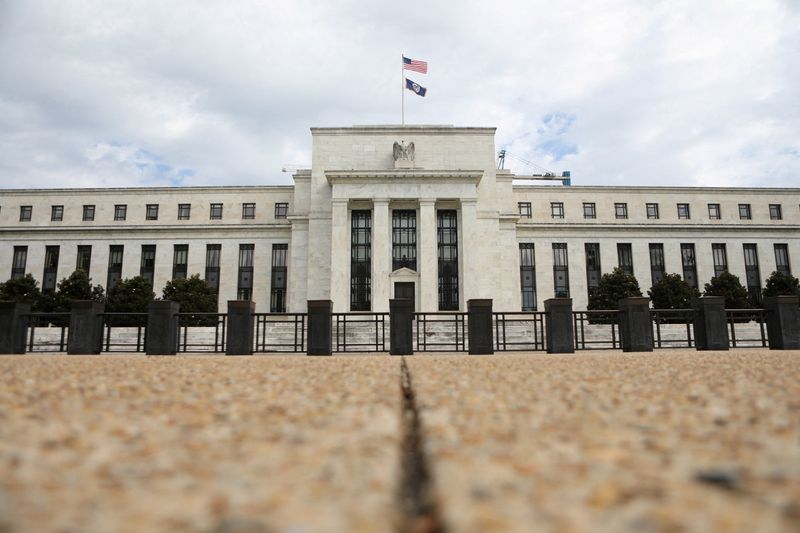By Lucia Mutikani
WASHINGTON (Reuters) -The U.S. economy contracted at a more moderate pace than initially thought in the second quarter as consumer spending blunted some of the drag from a slower pace of inventory accumulation, dispelling fears that a recession was underway.
That was underscored by the report from the Commerce Department on Thursday, which also showed the economy growing steadily last quarter when measured from the income side. This fits in with recent solid readings on the labor market, retail sales and industrial production.
Gross domestic product shrank at a 0.6% annualized rate last quarter, the government said in its second estimate of GDP. That was an upward revision from the previously estimated 0.9% pace of decline. The economy contracted at a 1.6% rate in the first quarter. Economists polled by Reuters had expected GDP would be revised slightly up to show output falling at a 0.8% rate.
While the two straight quarterly decreases in GDP meet the standard definition of a technical recession, broader measures of economic activity suggest a slow pace of expansion rather than a downturn.
An alternative measure of growth, gross domestic income, or GDI, increased at a 1.4% rate in the second quarter. GDI, which measures the economy's performance from the income side, increased at a 1.8% pace in the first quarter.
The average of GDP and GDI, also referred to as gross domestic output and considered a better measure of economic activity, increased at a 0.4% rate in the April-June period, up from a 0.1% growth pace in the first quarter.
The income side of the growth ledger was boosted by strong profits as well as wage gains amid a tight labor market.
National after-tax profits without inventory valuation and capital consumption adjustments, conceptually most similar to S&P 500 profits, increased $284.9 billion, or at a 10.4% pace, accelerating from the 1.0% growth pace in the January-March period. Profits were 11.9% higher from a year ago.
FIRMER FOOTING
The economy remains on firmer ground. Underlying retail sales were much stronger than initially reported in May, and that strength persisted through June and July. Industrial production raced to a record high in July, while business spending on equipment was solid. The labor market continues to churn out jobs at a brisk clip.
The National Bureau of Economic Research, the official arbiter of recessions in the United States, defines a recession as "a significant decline in economic activity spread across the economy, lasting more than a few months, normally visible in production, employment, real income, and other indicators."
But the risk of a recession has increased as the Federal Reserve aggressively raises interest rates to cool demand in order to curb inflation, souring both business and consumer sentiment. The U.S. central bank has hiked its policy rate 225 basis points since March.
Fed Chair Jerome Powell's address on Friday at the annual Jackson Hole global central banking conference in Wyoming could shed more light on whether the U.S. central bank can engineer an economic slowdown without triggering a recession.
The labor market is a key piece of that puzzle. Though interest rate-sensitive industries like housing and technology are laying off workers, broad-based job cuts have yet to materialize, leaving the overall labor market tight.
A separate report from the Labor Department on Thursday showed initial claims for state unemployment benefits fell 2,000 to a seasonally adjusted 243,000 for the week ended Aug. 20. Claims have been bouncing around the 250,000 level since hitting an eight-month high of 261,000 in mid-July.
The number of people receiving benefits after an initial week of aid dropped 19,000 to 1.415 million during the week ending Aug. 13. The so-called continuing claims, a proxy for hiring, covered the week during which the government surveyed households for August's unemployment rate.
The jobless rate fell to a pre-pandemic low of 3.5% in July from 3.6% in June. There were 10.7 million job openings at the end of June, with 1.8 openings for every unemployed worker.
